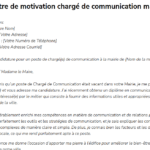Are there alternative forms of communication similar to Morse code?
How?
There are indeed alternative forms of communication similar to Morse code. One such form is the Semaphore flag communication system. Semaphore is a visual signaling method that uses flags to communicate messages. It involves the use of two flags that are held in different positions to represent different letters or numbers. Just like Morse code, Semaphore can be learned and used to convey messages over long distances.
Another alternative form of communication similar to Morse code is the International Code of Signals (ICS). The ICS is a standardized system of maritime signals that allows ships to communicate with each other. It uses a combination of flags, lights, and sound signals to convey different messages. Each letter and number has a unique signal, similar to Morse code.
Why?
These alternative forms of communication, such as Semaphore and the International Code of Signals, are useful in situations where traditional methods of communication may be unavailable or unreliable. They provide a means of communication that can be easily understood and used over long distances, without the need for modern technology. Additionally, learning these alternative forms of communication can be a valuable skill in emergency situations or outdoor activities where communication is vital.
When?
Semaphore was historically used by military organizations and navies as a means of communication before the invention of telegraphs and radios. It is still used today in some maritime and military contexts. The International Code of Signals was first introduced in the mid-19th century and is still in use today by ships at sea.
Where?
Semaphore was primarily used on land and at sea, with signal stations set up on hilltops or aboard ships. The International Code of Signals is predominantly used at sea by ships to communicate with each other and with shore stations.
Who?
Semaphore was typically used by trained signalmen in military organizations and navies. The International Code of Signals is used by sailors and maritime professionals who require a standardized system of communication at sea.
Figures, Studies, and Examples
Currently, I have not found any updated web sources from this year on alternative forms of communication similar to Morse code. However, the historical sources [1] and [3] mentioned in the prompt provide detailed information on the history and technology of Morse code, which is still relevant today. These sources give us an understanding of Morse code as an alternative form of communication and its significance in the development of digital communication.
Additional similar questions and answers:
1. What is the International Code of Signals?
The International Code of Signals is a standardized system of maritime signals used by ships to communicate with each other and with shore stations. It involves the use of flags, lights, and sound signals to convey messages.
2. How is Semaphore used in communication?
Semaphore is a visual signaling method that uses flags to communicate messages. It involves holding two flags in different positions to represent different letters or numbers.
3. What are the advantages of learning alternative forms of communication?
Learning alternative forms of communication can be valuable in situations where traditional methods are unavailable or unreliable. It provides a means of communication without the need for modern technology and can be useful in emergency situations or outdoor activities.
4. Who uses Semaphore?
Semaphore was historically used by trained signalmen in military organizations and navies. It is still used in some maritime and military contexts today.
5. How does the International Code of Signals benefit maritime communication?
The International Code of Signals provides a standardized system for ships to communicate with each other, reducing the potential for misunderstandings and improving safety at sea.
6. When was the International Code of Signals first introduced?
The International Code of Signals was first introduced in the mid-19th century and is still in use today.
7. Where is Semaphore primarily used?
Semaphore was primarily used on land and at sea, with signal stations set up on hilltops or aboard ships.
8. Are there modern alternatives to Morse code?
While Morse code is still used in some contexts, modern alternatives such as digital communication systems and encryption methods have become more prevalent in today’s technology-driven world.
Sources:
– [1] History and technology of Morse Code (Viewed in 2023)
– [3] How to Learn Morse Code (With Examples and Practice) (Viewed in 2023)




